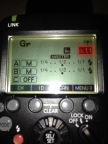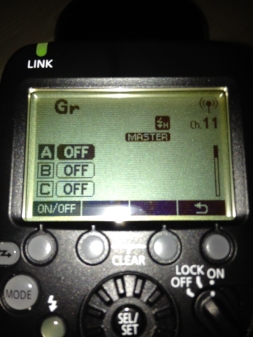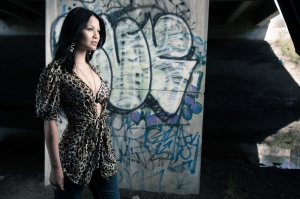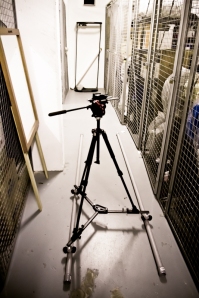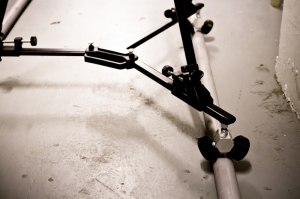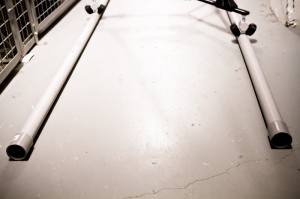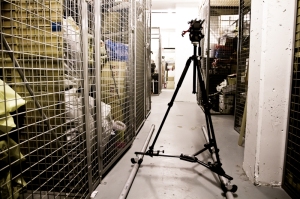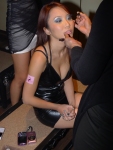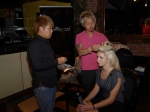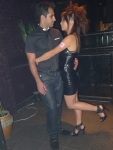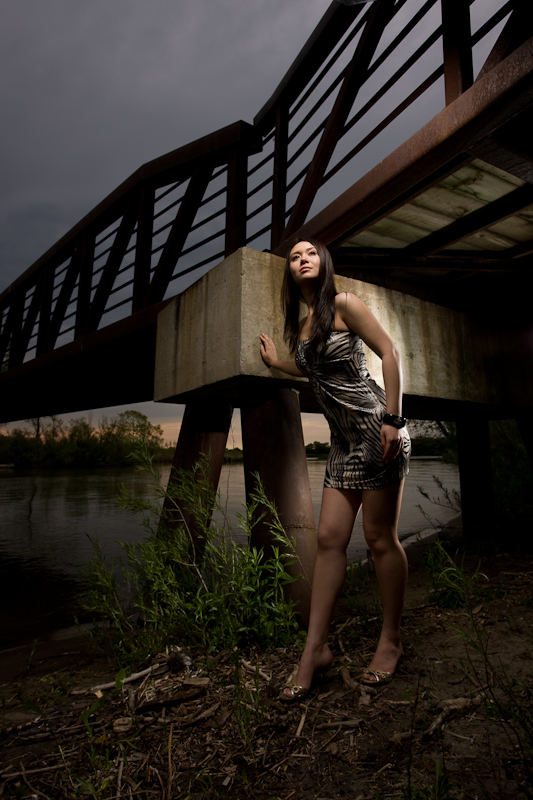I had recently acquired Canon’s newest speedlight system. Recognizing the need of off camera lighting users and accomodating the Strobist movement which has become relatively mainstream these days, Canon’s new system provides a host of new features and a game changing addition; integrated wireless radio.
Canon and Nikon had always offered a wireless option on their flash system in the past, but these were based on light and relied on the slave flash seeing the master flash’s pre-flashes that contain a coded sequence. The slave then decodes the sequence and sets itself. There are a number of issues with this, including the requirement of line of sight which requires carefuly deliberation when placing the slave units. You also cannot know if the slave has recycled or which one is still recycling because the slave does not communicate back with the master at all.
To solve these issues in the past, I would grab my Pocketwizard Flex/Mini system. This system directly communicated with the camera and used a radio link to communicate with the slave flashes. Each flash would slide into the hotshoe of the transceiver and the transceiver into the camera (for the master flash). But because it was not a truly integrated system, I ran into a host of issues. The first issue was interference. Since the 580exII’s were notorious for EMI, I bought a roll of Veilshield RF blocking fabric to cut out socks that I needed to slip over each flash. Even Pocketwizard eventually realized this and started to include these socks for free. Without using them, the triggering was quite unreliable. I could be as close as a few feet and I would still get the occasional non-trigger. With the socks, the reliability and distance improved substantially, with only a few frames in a hundred that I would get a drop-out. With the Flex system there was also an order which to turn on the system, sometimes turning on the flash before the transceiver would be an issue, and each receiver needed its own set of AA batteries. The transceivers did not have a user interface for setup either, so if there were changes to be made, it would require a trip to a laptop. Then these settings needed to be cloned to each other transceiver, while ensuring the firmware revision for each was matched or it would be total chaos on-location troubleshooting why certain flashes were not firing. But I stuck to it because the flexibility this system gave me and the ultimate freedom to set the slaves from the camera and without worrying about placement.
I shot the image to the left using the flex system with 2 580exIIs. One in a photoflex litedome x-small camera right and a far strobe bare illuminating the smoke machine’s output. Because of the communication with the flashes, I was able to dial in my off camera flashes from the camera without running to each flash, taking a shot and checking the histogram.
As soon as Canon offered their own system, I parted with my 580exII’s and upgraded. The new system is a vast improvement. Each flash finally has context sensitive buttons and are all illuminated, making setups a breeze. The radio system has been expanded to allow up to 5 groups and can be setup independently. You can have a few flashes in Group A set to ETTL and you can have one in Group B set to manual mode against a wall for separation. There are also indicators to let you know when the slaves have recycled without guesswork. The system has
15 channels and 10000 radio ID’s to prevent interference with other shooters and also has a radio scanner to determine which channels have the least interference. With the system being integrated, there are also less points of failure to deal with and much fewer batteries to have to check and carry around. Canon has added a few nice touches to the system to increase usability such as providing the facility to set the backlight color to differetiate between your master and slaves and a beep setting that mirrors the beep-when-recycled functionality of studio strobes.
I also acquired the ST-E3-RT master unit which is a pared down version of the 600EX and is only used for triggering remote slave units. It’s much lighter than a 600 series flash and the lcd display is face up allowing better ergonomics when setting flash settings. This is similar to the now older ST-E2 master unit which only has the option for optical triggering. One item missed with the new master unit is the AF assist light. Many shooters I know used the ST-E2 just for the AF assist light because it was much lighter than using a flash and were shooting fast primes anyways. I could have gotten 3 600EX-RTs and just used one of them as a master instead.
The flash and master units all use the same turn and lock switch for mounting and also use the same weather sealed hot shoe attachment as the 580exII compatible with Canon’s pro bodies.
I took this setup to a shoot on Saturday with a friend of mine to try out the new system. Before leaving the house, set-up was quick easy:
For the slave units:
a) Switch each slave on and toggle the flash to slave mode by pressing the button marked with a thunderbolt icon. At default settings, the screen will turn orange in slave mode.
b) I press the Gr button to identify the flash as Group A, B, C, D, E.
c) I then use the context menu to setup my channel and radio ID. The Menu 1 button allows you to jump between menu pages and the button will change to Menu 2, Menu 3, Menu 4, etc.
In this case, I decided on Channel 11, Radio ID 11. and I set Slave A and Slave B accordingly.
For the master unit:
a) I powered up the master unit, and setup my Channel ID and Radio ID to 11.
b) I then pressed the Mode button to navigate to Group GR mode. This allows me to independently setup each of my slaves manually. If I didn’t want to use the system in Gr mode, I could cycle the Mode button to either Multi (Stroboscopic), ETTL, or M (all slaves fired as 1 group). Many wedding or event shooters will probably use ETTL and let the slaves fire themselves and simply dial in flash exposure compensation to better match the faster pace requirements than a deliberate setup like mine below.
b) I pressed the Gr button and used the rotary wheel to select each group. I can then either turn that group off, set the group to a different mode (ETTL, External TTL-A or Manual), or set the power or compensation.
In this case, I decided Group A was going to be set as Manual and Group B was going to be set as Manual. This would give me maximum latitude and mirror my workflow in the studio. I can now dial in my power requirements from the camera without leaving my shooting position.
I then put Slave A (main light) into an Elinchrom Deep Octa 100cm and I put Slave B (fill light) into an Elinchrom Minisoft 44cm Dish. I had to use an aftermarket flash bracket to be able to mount the Rotalux Speedring used by Elinchrom onto my flash units. I bought my brackets here. With everything ready to go, I picked up my friend Rowena, who was going to assist me with testing this system!
It was very sunny outside, so I chose a spot underneath a bridge to better maximize the relatively low output of the 600ex flash. With the Deep Octa, even at 1/1 output, I’m probably losing 2-3 stops of light. If a standard shoe mount flash is ~75w/s, I’m not seeing much more than 20-25w/s. I was shooting the main light near 3/4 to full, so the flash confirmation came in handy because I knew exactly when the main light recycled. After a number of pops, I noticed the recycle time starting to go north, so I plugged in a CP-E4 external power pack to the Slave A flash to cut the recycling time. I kept Rowena close to the main light to really show-off the lighting quality that Elinchrom’s Deep Octa’s brings to the table. Dialing the power up and down was a breeze and very reliable. I didn’t experience any drop outs whatsoever.
The next test was trying out the Hi Speed Sync function. One of the limitation of studio strobes and focal plane shutters (most DSLRS except for some medium format system and some boutique cameras like the Fuji X100, etc.) is the inability to sync with a fast shutter speed > 1/180 to 1/250. Firing with too high a shutter speed will yield a dark band across the image depending on where the actual shutter is at the moment the flash fires. To circumvent this issue, Hi Speed Sync strobes the flash unit so there is enough time for the shutter to capture the entire flash pulse. This allows more flexibility in setting your exposure without having to stop down the lens to cut the ambient light and (at the same time) increase the Depth of Field. To test this, I used a 1/500 shutter speed and had Rowena run across the camera and jump into the Deep Octa I had set-up on the other side. With my 5D3, I noticed that once the shutter speed was above 1/200, the light quantity dropped significantly as the system moves into high speed sync mode. With such a large lighting modifier like the Deep Octa, and a somewhat bright ambient, there just isn’t enough power to provide much light once you crank up the shutter speeds. I settled on 1/500 as I found it had just enough power to illuminate Rowena’s body as she was running towards the Deep Octa to separate her from the background. If I had shot this at 1/200, I would have probably yielded a blurry image due to subject movement. It was the early afternoon, but If I had waited until a bit later into the evening, I would have much more lattitude with my flashes because it no longer has to compete with the ambient light as the sun sets and I could probably get a usable 1/1000 or faster shutter speed.
Before we left for the day, I took a few more shots with the 600ex, trying various combinations such as shooting ETTL, dialing in compensation and shooting from different distances from the slave units to see how well it would work based on how I work on location. I never experienced any lockups requiring a power cycle or mis-firings all day. Canon must have spent a considerable amount of time ensuring the system was relatively bug free before putting it on the market. Two considerations I should mention is that I am using a 5D mark III. The 600ex-rt is specifically designed for Canon 2012 bodies like the 5D Mark III and the 1DX. They mention that when using a previous generation body, there are hi speed sync considerations and also the inability to use Groups D and E on radio. I didn’t bring my 1D4, so I never got a chance to make a comparison between how the 600EX system fares on the older bodies. If I run into any issues down the road, I’ll write an update following-up those findings. The other consideration is cost. One master unit and 2 600Ex-RTs or 3 600EX-RTs will run you about $1600-$1800+tax. This is almost the price of a two head Profoto D1 Air system. The biggest difference though will be realized in its convenience and size. I can pack 2 lights and 2 Manfrotto 5001B Nano-Stands into a medium backpack with 2 small umbrellas and have both hands free. They also support ETTL so its great for event work. With the integrated radio, you also no longer have to carry around triggers, batteries and sync cords. Everything is self-contained.
As a predominantly on-location shooter, I’ve been waiting for this to be offered as a first party solution for a few years now, so I definitely give it a highly recommended rating and will be looking forward to using this a lot more this year.


